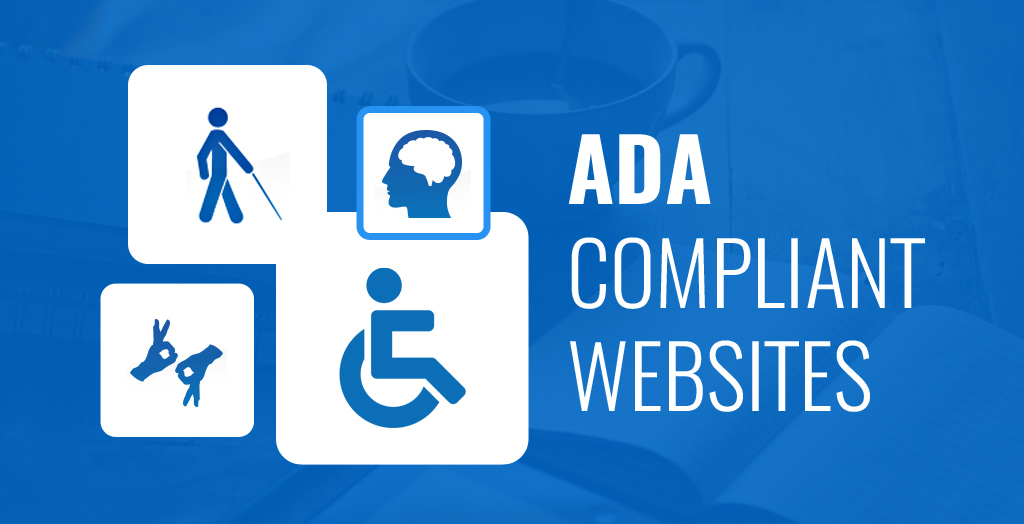Table of Contents
“The power of the web is in its universality. Access by everyone regardless of disability is an essential aspect. ” – Tim Berners-Lee
Last week, a huge issue came to the picture that has re-ignited a debate about ADA policies and how the world of websites should take them into consideration. One of the leading chain of restaurants, Domino’s Pizza was declined an out by the Supreme Court from a lawsuit arguing that its website is inaccessible to people with blindness, violating the 1990 Americans with Disabilities Act.
It is just not Dominos that has faced the heat. Even the top names in the world like Amazon, Netflix, Nike have been caught in the net. There is a lack of clarity surrounding ADA compliance and website thus meaning this one has the potential to set a major precedent. 99.99% of companies don’t think about ADA compliance until they are slapped with a lawsuit.
What is ADA?
The Americans with Disabilities Act (ADA) is the law that talks about accessibility. Title III of the ADA has been interpreted by U.S. courts to apply to websites even though there is no mention of the same explicitly. If the website is accessible, then only it can be considered to be eligible to be ADA compliant.
Web accessibility addresses the needs of every website visitor to achieve an optimal level of usability and ADA compliance. Many people browsing the web have a permanent disability (visual, mobility or neurological impairment), or a temporary impairment such as a broken arm, broken or lost eyeglasses, and so on. Many baby boomers have aging-related issues that make using the web more challenging, and they’re not alone – about 20% of the U.S. population has an identified disability.
The University of California, Berkeley web accessibility evangelist Lucy Greco, who is blind, told CNET that the lack of clarity surrounding regulations is an excuse for businesses to avoid their obligations. “People are trying to find a scapegoat, and the scapegoat to them is that the law isn’t clear,” Greco said. “The law has been pretty clear.”
The solution is to make the website ADA friendly, so that everyone, including persons with disabilities, can equally use your website, access content, navigate website successfully, engage with different elements, etc.
What is the fuss all about?
There is no explicit mention of ADA addressing online compliance, even after undergoing several amendments over time. As there is no such specific coverage under the law, in the end, it falls in the hands of the court to determine whether the ADA standards apply to the websites or not.
From 2017-2018, lawsuits for ADA website compliance increased by 177%, with more than 2,258 filed in 2018 – up from 814 in 2017. New York and Florida were dubbed the busiest jurisdictions, with fourteen other states making the charts.
Let’s say if you are faced with such a lawsuit, and if you want to fix that, the damages must be paid to the plaintiff. In such cases, the settlement is expected to be between $8,000-$13,000. But if you choose to fight, damages plus lawyer fees could put you at more than $75,000 – this is a heavy burden for a small business. The cheaper and smarter way out is to actually address the issue and make the website ADA compliant, which is only going to help you in the longer run.
What does it require to make a website ADA compliant?
The first question that comes to your mind is: ‘ does my business have to comply with the ADA regulations?’. The basic answer to it is if your business does not cater to the public or is on an extremely small scale, then it may not need to comply with the rules.
As per the rules of ADA’s Title I, a business with 15 full-time employees and operates for 20+ weeks each year is required to be ADA compliant. In ADA’s Title III is considered, a business that falls under the “public accommodations” category like banks, public transportation, and hotels are required to be compliant as well. These laws apply to physical locations as well as digital accommodations.
According to Website Content Accessibility Guidelines (WCAG 2.1 being the most current), website content must follow P.O.U.R:
-
Perceivable
– These affect a user’s ability to find and process the information on a website (for example, providing audio descriptions for video content).
– Make sure your content is usable by all. Add captions to videos.
– Every image should contain a caption and alt text – unless those images are purely for decoration or spacing.
– Present content in different ways, through larger print, speech, or even a simpler layout.
– Design the site to have a clear separation between foreground and background, either through color contrast or design.
– You can read more at WCAG 2.1 perceivable guidelines -
Operable
– These impact a visitor’s ability to navigate and use a website.
– Make sure your website can be navigated by a keyboard for there are a lot of people who are unable to operate a mouse. If media is present, have ways to pause, if needed to be.
– Clearly label each page and section so that viewers know where they are and how to navigate the site.
– Learn more about WCAG 2.1 operable guidelines here. -
Understandable
– The concern of a user’s ability to discern and comprehend all information and navigation on a website is addressed.
– Logical websites are key for ADA compliance. All pages should function in the same manner consistently, allowing users to navigate without pause.
– Instructions should be included for pages where user input (like subscriptions or checkout window is asked for.
– The language of the page should be programmatically identifiable.
– Read more about WCAG 2.1 understandable guidelines -
Robust
– This involves a website’s ability to adapt and evolve to meet the changing needs of users with disabilities
– testing compatibility with all leading screen readers and ensuring that those capabilities can be upgraded in the future
– Robust websites are universally recognized by browsers. To have a robust site, you need to look at your code. Are you using standard HTML Tags? Have you included assistive technologies? The basic idea is to have your code up-to-date with all current web standards.
– Even though this is the smallest section, it is more technical to be taken care of.
– Read more about this at WCAG 2.1 robust guidelines
Considering the website’s user diversity and their needs, in the designing perspective, you can refer to 10 examples of ADA compliant Accessible Web Design which can give a clearer picture of what is not to be done.
Conclusion
Corporations and businesses are already starting to push to these standards for a lot of different reasons, not only because there are lawsuits involved, but [also] because it’s good practice and helps them reach as many people as possible.
Get a proper audit to review your code, determine how ADA compliant should your website be according to the nature of your business and make sure to stay updated on the standards. If you still have queries on the same and don’t know where to start with, Ace Infoway can help you get a proper code audit done for your website and guide you as to how to go about this process of getting compliance-ready.

























Leave A Comment